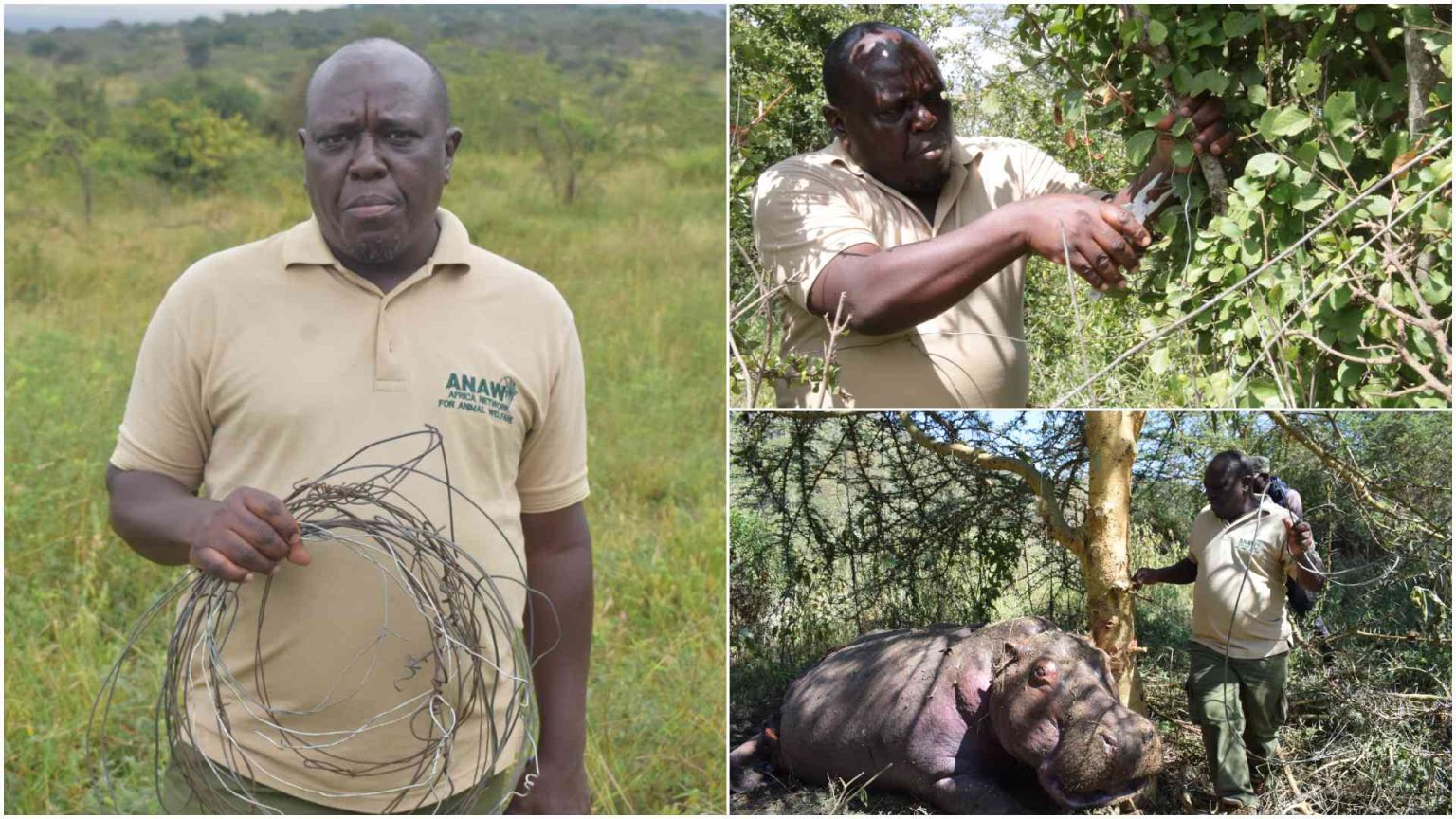In the sprawling savannas of Kenya, where wildlife corridors intersect with human settlements, one man has dedicated over two decades to a singular mission: freeing animals from the deadly grip of poachers’ snares.
Isaac Maina, the De-snaring Manager at the African Network for Animal Welfare (ANAW), stands as a towering figure in Kenya’s conservation landscape, having pioneered methods that have saved thousands of animals and transformed wildlife protection strategies across the country.
Maina’s journey into conservation began unexpectedly during his university years in 1989. While studying artificial engineering at Moi University, he joined the Moi Wildlife Club—a decision that would fundamentally alter his life’s trajectory.
“I liked animals,” Maina says, but it was a trip to Tsavo, courtesy of the David Sheldrick Wildlife Trust, that ignited his passion. “It was my first time to see elephants, to interact with elephants and Tsavo. From that, all I wanted was to work in a Tsavo environment.”
After graduation, Maina and fellow conservation enthusiasts formed a group called Youth for Conservation, determined to continue their environmental work beyond college.
During one of their monthly meetings, the concept of organised de-snaring was born. The group’s chairman, Joseph Gonyo, had visited the Mutitu area and witnessed the devastating impact of snares on wildlife. “He came with the concept of why can’t we get a group of youths to go and look for snares that are trapping animals,” Maina explains.
In April 1999, Maina participated in what would become a watershed moment for Kenyan wildlife conservation. Three young conservationists ventured into community lands around Mutitu, collecting over 200 snares.
But it was their August expedition to Tsavo West National Park that truly opened their eyes to the scale of the crisis. In a single day, they recovered 779 snares—a number so staggering that park authorities initially refused to believe it.
“The park warden could not believe that snaring was happening within the park,” Maina recounts. “At that time, there was a lot of poaching for elephants and rhinos, and most patrols were dedicated to that. People were not combing the bushes, removing snares.”
This operation marked the beginning of formal de-snaring patrols in Kenya and led to Maina’s employment with the David Sheldrick Wildlife Trust as an elephant keeper.
Maina’s expertise grew as he encountered increasingly complex rescue scenarios. A pivotal moment came around 2002 when his team discovered a young elephant with a massive snare—a winch wire wrapped around its neck.
This incident led to the formation of the “Bura team,” named after the area where the rescue took place. The team’s success in that region demonstrated the critical need for systematic anti-snaring operations.
The scale of the problem was overwhelming. “In one day, we’d get 13 animals snared,” Maina recalls of operations in the Kapiti Plains.
The situation was so severe that Kapiti Plains Lodge, owned by the International Livestock Research Institute, decided to remove livestock paddocks where snares were commonly placed.
Maina’s work catalysed significant developments in Kenya’s wildlife veterinary services. The frequent encounters with snared animals highlighted the urgent need for on-ground veterinary support.
Previously, vets were based in Nairobi and could take three to four days to respond to emergency calls due to logistical challenges.
The intensity of snaring incidents that Maina’s team encountered led to the establishment of Kenya’s first mobile veterinary unit in Tsavo, fundamentally changing how wildlife medical emergencies are handled.
“From the many, many cases that I used to get when I was a manager at the orphanage and during the de-snaring operations, it became imperative that a vet needed to be on the ground,” Maina explains. This has since been replicated across Kenya’s conservation areas.
“The danger of snaring is more than that,” he emphasises. “When you leave a snare in the bush, it can catch animals even if the poacher is not there. Animals get killed, they are maimed, they are cut. It leads to very cruel and painful death.”
Modern poachers have adapted their methods, using mobile phones for communication and surveillance, motorcycles for chasing animals, and powerful torches for night hunting—a technique called “lamping” where animals become stupefied by bright lights.
However, he says these same technologies have also aided conservation efforts, as community members use mobile phones to report poaching incidents.
Maina’s career statistics are impressive: he has led over 80 de-snaring operations, lifted more than 30,000 snares, and facilitated the apprehension of over 70 poachers.
His contributions have earned him numerous accolades, including the Disney Worldwide Conservation Fund Hero Award in 2008 and a decade-long service as a Kenya Wildlife Service Honorary Warden.
Yet the job carries heavy emotional weight. “Sometimes you find an animal—its leg is broken, the wound too severe—and you have to euthanize it. That breaks your spirit,” he admits.
Buffaloes, too, remain a constant danger. “They’re the most aggressive. We’ve had many close calls. No serious injuries so far, but you must always be alert.”
During drought seasons, wildlife congregates around water points—prime zones for snares.
“Poachers follow patterns. During rains, they’re farming. But in dry seasons, snaring spikes.”
Maina understands that removing snares isn’t enough. “You have to deal with root causes. People don’t poach just for fun—it’s poverty, lack of alternatives.”
“We want people to see wildlife as an asset, not an obstacle,” says Maina.
Maina’s impact is not only in the field. He holds a Bachelor of Science in Technology Education from Moi University, a Master’s in Project Management from the University of Nairobi, and is pursuing a PhD in the same field.
